Synthetic — Tops
Eddie Bauer Resolution Quantum Short-Sleeve T-Shirt
Material: 100% polyester
MSRP: $60
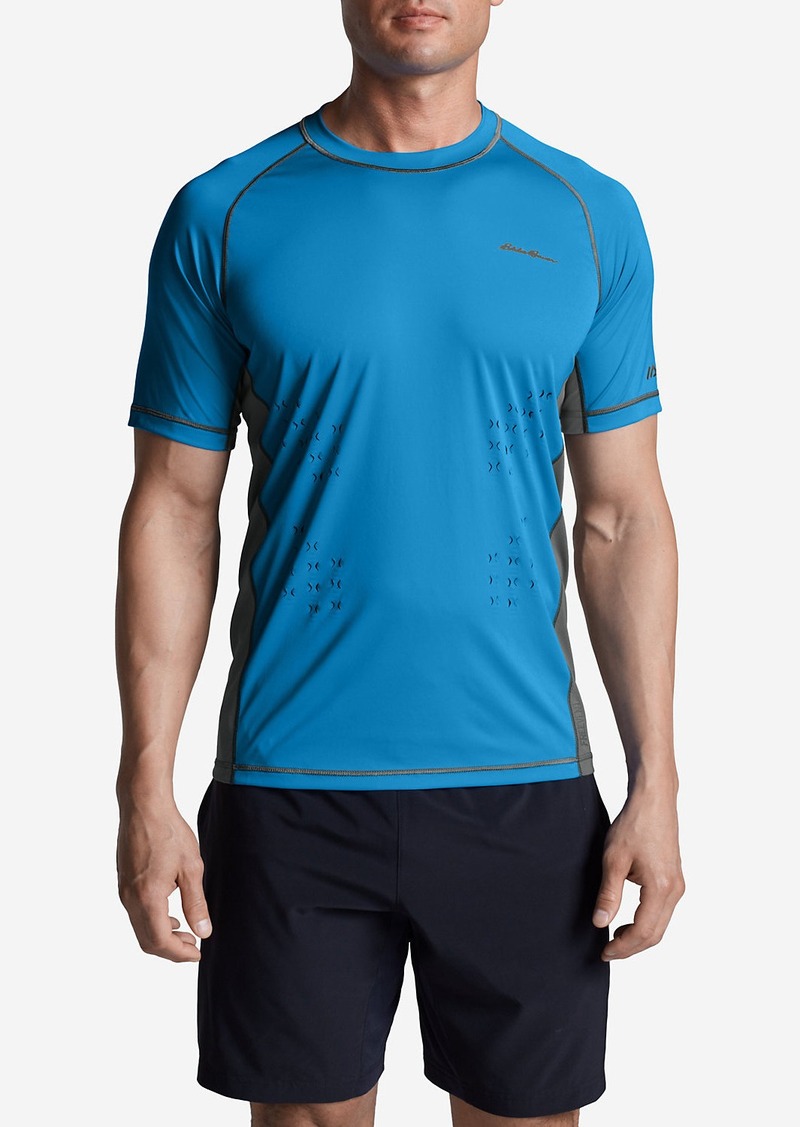
The Resolution Quantum uses a unique technology that makes laser-cut perforations on the front and back of the shirt open up when they come into contact with sweat. Though the vents don’t exactly make a night-and-day difference, they do provide a bit of extra breathability, and when combined with the Resolution Quantum’s ultralight construction, they make this shirt our top pick for the hottest days. However, this shirt has no antibacterial treatment, so don’t expect to wear it for more than one run (unless you have no regard for the noses of those around you).
The raw edges of the perforations are also a bit scratchy (though they’re not very noticeable while moving), so we’d recommend the Resolution Quantum specifically for high-output activities in the heat, and not for casual use. It has a slightly slim fit, but is shorter and less clingy than the Resolution Flux (below).
Eddie Bauer Resolution Flux Short-Sleeve T-Shirt
Material: 86% nylon, 14% polyester
MSRP: $65
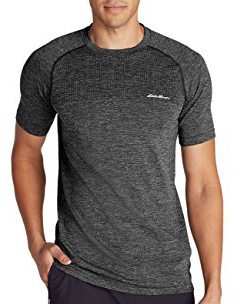
The Resolution Flux’s fabric feels very smooth on skin (rather than the raised texture of most of the wool pieces here), and features seamless mesh panels on the sides, chest, and upper back which add to its breathability. It’s fairly heavy compared to other summer-weight base layers, and that is noticeable. However, the combination of the mesh panels and the main fabric’s very good wicking properties still make this shirt comfortable in warm temperatures.
The Resolution Flux features a Polygiene antimicrobial treatment, which we’ve found to resist odor for about 1-2 sweaty runs. It fits fairly slim through the torso and is pretty long, something that people with shorter torsos might find slightly restrictive.

Lululemon Metal Vent Tech Short Sleeve
Material: 51% polyester, 46%nylon, and 3% X-static nylon
MSRP: $68

The Metal Vent Tech Short Sleeve shirt falls between the two Eddie Bauer pieces in this review when it comes to fabric weight, and it was the best performing synthetic shirt when it came to odor resistance (thanks to the addition of silver fibers).
The Metal Vent Tech Short Sleeve breathes and wicks well, doesn’t feel as clingy as the Eddie Bauer Resolution Flux, and fits a bit looser than both Eddie Bauer pieces. The Metal Vent Tech Short Sleeve is fairly similar in both fabric weight and fit to the Trew Superlight NuYarn Merino Pocket T.
Material: 100% polyester
MSRP: $75
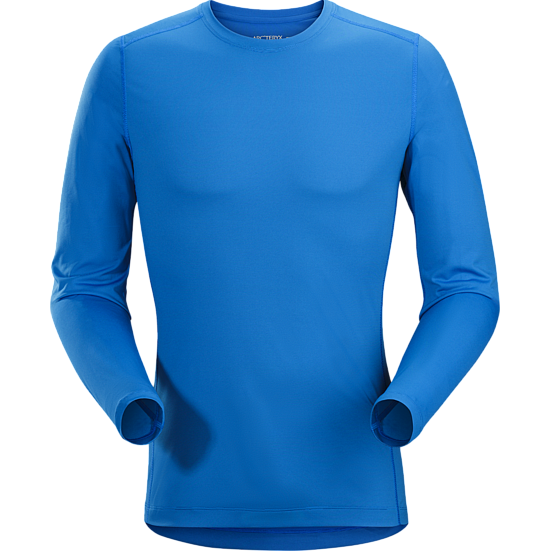
This top is very light, allowing it to work well for layering systems where you depend more on your mid layers for warmth. It has a long, trim cut with plenty of length in the arms, and wicks moisture very well.
Lululemon Swiftly Tech Long Sleeve Crew (Womens’)
Material: Silverescent® fabric
MSRP: $78

The Swiftly Tech Long Sleeve is a light, comfortable, versatile base layer than can be used for a broad range of outdoor activities, year round.
Arc’teryx Women’s Delta LT Zip Neck
Material: 152 g/m2 Polartec® Classic 100 Micro Velour Small Grid — 100% polyester
MSRP: $99
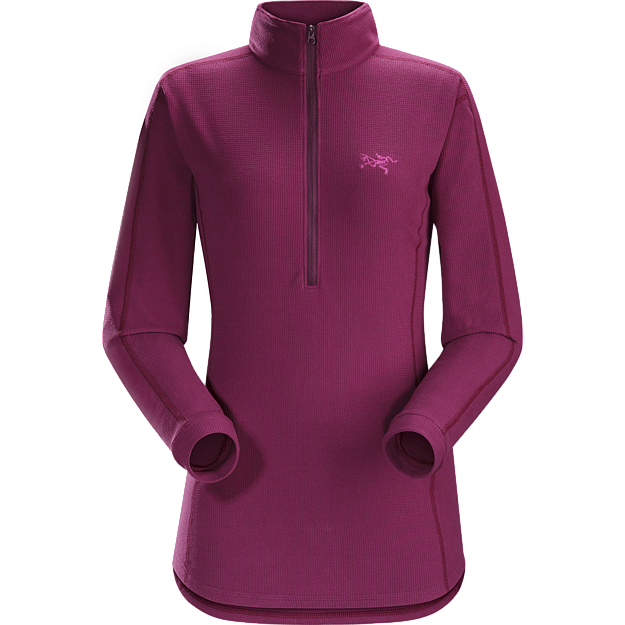
This piece is pretty warm, so while it might not be the best choice for high-exertion activities, it is great for cold rides on the chairlift, yet it dries quickly and wicks well.
Material: 159 g/m2 Polartec Power Grid — 100% Polyester
MSRP: $39-$55

The grid fleece material of the MEC T2 Zip Hoody is similar to Patagonia’s Capilene Thermal Weight, but not quite as warm. The thinner part of the grid fabric allows it to dry faster and breathe better than traditional fabrics. Though it’s not quite as soft and comfortable as a standard fleece, the increased breathability and quicker dry times of the grid fabric make up for it, and we’ve found this piece to be a good option for colder days when it gets below around 30°F.
Synthetic — Bottoms
Patagonia Capilene Lightweight Bottoms
Material: 2.3-oz (80-g) 100% recycled polyester double knit
MSRP: $49
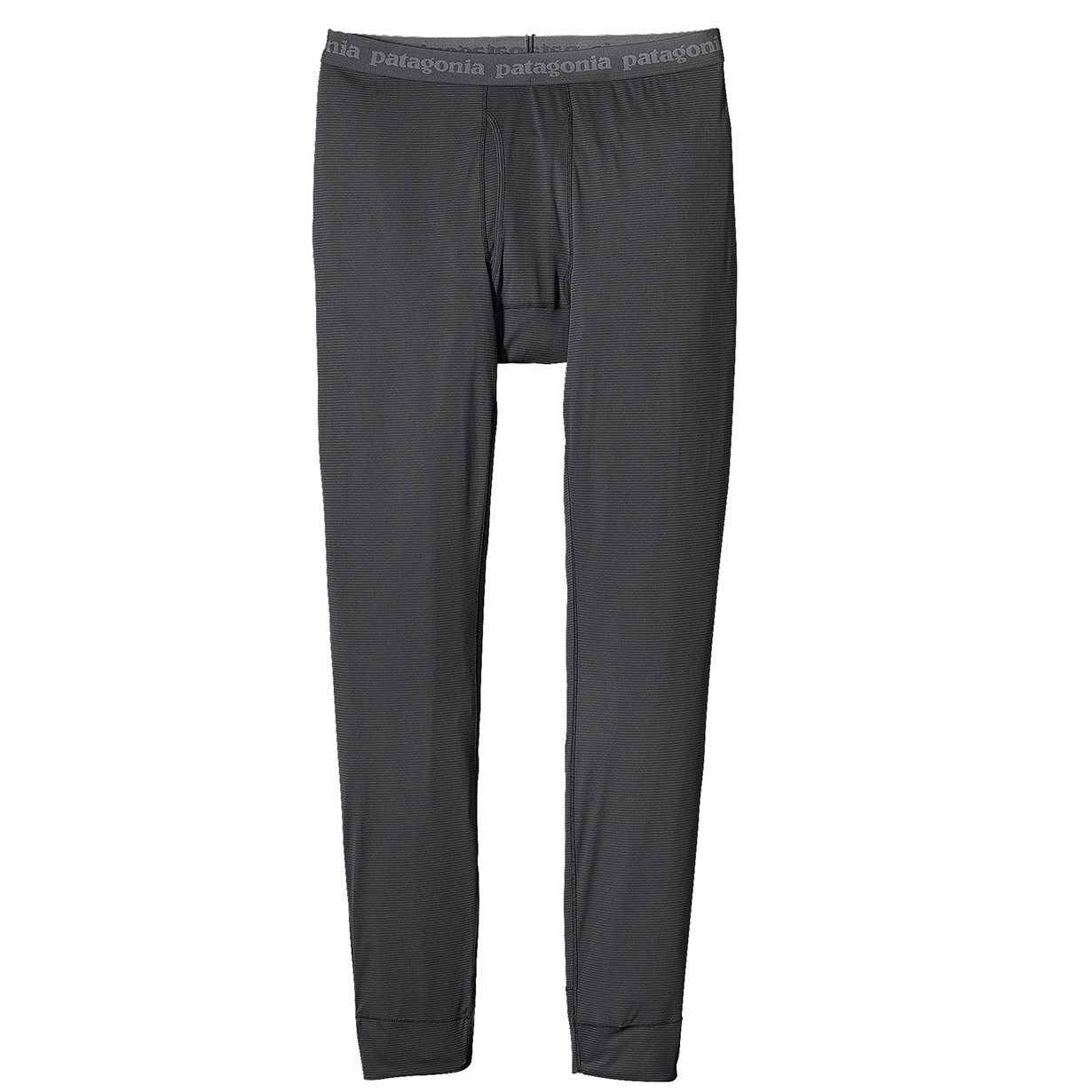
These are a favorite among several of our reviewers thanks to their light weight, wicking performance, and durability. If you’re looking for a very light synthetic base layer bottom, the Capilene Lightweight Bottoms are an excellent option.
Skins A400 Compression ¾ Tights
Material:
MSRP: $119

Basically, for anyone who tends to experience minor (or major) knee pain while skiing, it might be worth checking out compression tights if you haven’t used them before. Blister founder and editor-in-chief, Jonathan Ellsworth, is a fan of the Skins A400 Compression ¾ Tights, and also appreciates that he can easily slide over them a knee brace for those times during a season where he’s tweaked a knee.
Patagonia Capilene Midweight Bottoms
Material: 5.2-oz (175-g) Polartec® Power Grid™ 97% polyester (66% recycled), 3% spandex
MSRP: $59
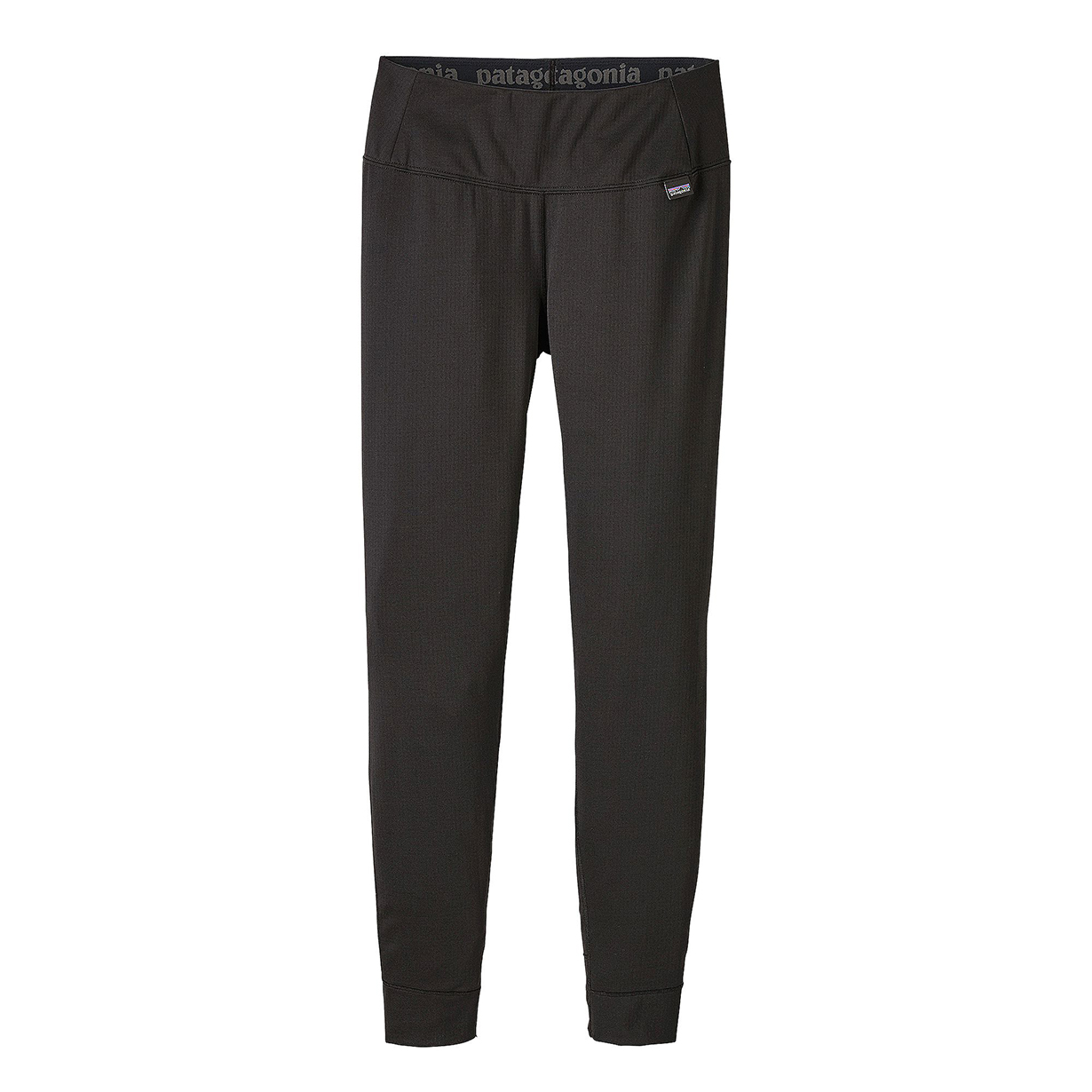
This is a warm, soft, and wicking layer that is great for cold lift rides and icy chairs, and it’s breathable enough to rock nearly every day. We haven’t had issues overheating in it while skiing the resort, yet it still provides warmth on colder days.
Material: 159 g/m2 Polartec Power Grid — 100% Polyester
MSRP: $45
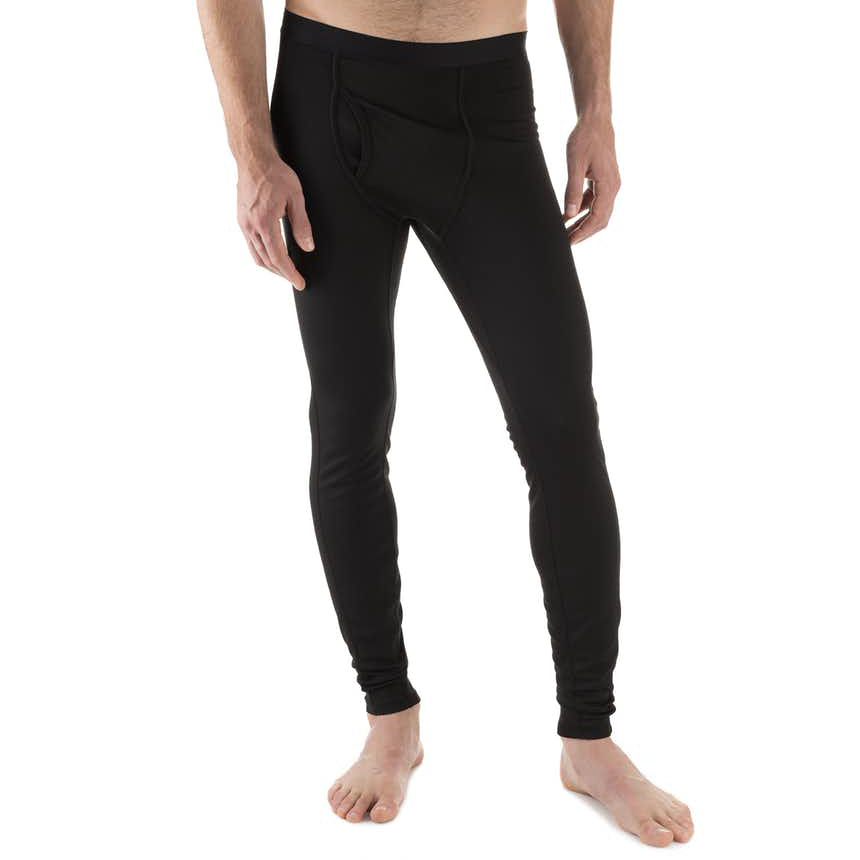
Just like the MEC T2 Zip Hoody, this grid fleece works well for frigid days, while still breathing better than most standard, heavyweight fleeces.
NEXT: Underwear

Do you (or someone) know of any silk baselayers of sufficient durability for outdoor use? Also, how about something regarding yak wool…I have read some good things about that, but never seen it reviewed by outdoors people.
Even as a former industry guy & lifelong gear nerd, g/m2 numbers mean *nothing* to me regarding garment weight or warmth.
Simply listing the overall weight & size of the garment tested would be a much more helpful starting point: folks at home can easily toss e.g. their favorite zip-T on a postal scale to get a point of reference.
g/m2 numbers are of no use to anyone who doesn’t work in a fabric mill.
I disagree, most merino wool baselayers have it listed, so after you own one or two, you get a pretty good idea for what you like. It’s not the be all-end all about fabric type, but it’s better than nothing.
I know that I prefer merino under 200g/m2, since its dries fast and isn’t too warm. But it’s not durable. 260g/m2 is getting pretty darn heavy for a baselayer, and in wool, will really impact dry time. Ok for resort skiing, but to warm for summer use, or active sports for me.
Hi guys. Thanx for such list. Could you please compare warmth of Trew NuYarn shirts and Mons Royale shirts? NuYarn site says that it’s fabrics 25% warmer. So their 145gms base layer must be indentical in warmth with 180-190 gsm.
All the problems with “stink” are easily fixed by simply putting some cologne on before you go out and play . I learned this from a friend, it works really well, and frankly everyone should be doing this, even if they use wool. Correct me if i am wrong, but cologne was originally invented to cover up the stink from pre-enlightenment Europeans who bathed once a year because bathing was frowned upon by the church (it encouraged sexual promiscuity). If it worked for them it will work for you.
Silk is awesome but it is so $$$. I have some silk glove liners and they are amazing.